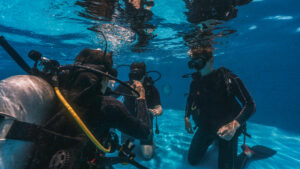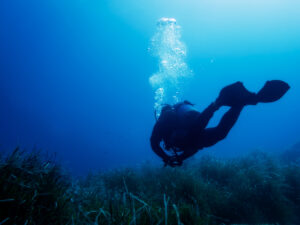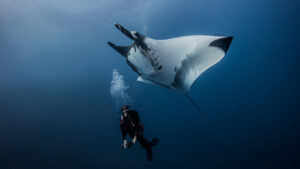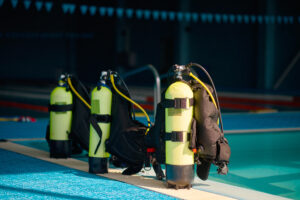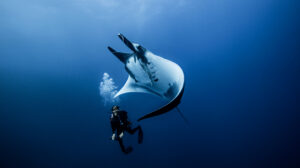What is a Toynbee Maneuver?
The Toynbee Maneuver is a strategy employed in scuba diving and other activities that involve significant changes in pressure, such as flying or mountain climbing. Named after British physician and researcher Dr. Arnold J. Toynbee, this method is designed to equalize the pressure in the middle ears, an essential procedure for maintaining comfort and preventing potential injury during dives.
The Science Behind the Toynbee Maneuver
The Toynbee Maneuver is grounded in the physiological principles of the Eustachian tubes, narrow passages that connect the middle ear to the nasopharynx, the area of the throat that lies behind the nasal cavity. These tubes play a crucial role in maintaining an equal pressure on both sides of the eardrum, ensuring its optimal function and preventing discomfort or damage.
When the external pressure changes—such as when descending or ascending in water—the pressure difference can cause a sensation of ‘fullness’ or discomfort in the ears. If not promptly addressed, it may lead to ear barotrauma, a potentially severe condition that can cause pain, temporary hearing loss, tinnitus, or even permanent damage.
The Toynbee Maneuver aims to manipulate the Eustachian tubes’ opening and closing mechanism, promoting the equalization of the pressure difference between the external environment and the middle ear.
Performing the Toynbee Maneuver
The Toynbee Maneuver is a simple two-step procedure. First, the diver pinches their nose closed, preventing air from escaping. Second, they swallow. Swallowing creates a negative pressure in the middle ear, which, combined with the closed nostrils, pulls open the Eustachian tubes, allowing the higher-pressure air from the nasopharynx to rush into the middle ear, thereby equalizing the pressure.
While this maneuver is generally safe to perform, it requires practice to perfect, and its effectiveness can vary among individuals due to anatomical differences. In some cases, other equalization techniques may be more effective or comfortable.
Comparisons to Other Maneuvers
There are other techniques to equalize pressure in the middle ear, including the Valsalva maneuver and the Frenzel maneuver. The Valsalva maneuver involves pinching the nose and gently blowing to force air up the Eustachian tubes, while the Frenzel maneuver requires pinching the nose and making a swallowing motion while keeping the back of the tongue elevated.
The Toynbee Maneuver is often considered gentler than the Valsalva maneuver, which can, if performed too forcefully, potentially damage the eardrum. Compared to the Frenzel maneuver, the Toynbee technique is typically easier to learn and perform, making it suitable for beginners.
Safety Considerations and Limitations
While the Toynbee Maneuver is generally safe, it’s crucial to remember not to force the procedure if experiencing pain or discomfort. The technique relies on the action of swallowing, which may be challenging to perform frequently during a dive due to dry mouth or other factors.
Furthermore, the Toynbee Maneuver may not be as effective in all pressure change scenarios. For example, during rapid ascents or descents, other techniques might provide quicker or more efficient pressure equalization.
Applications Beyond Scuba Diving
Although primarily utilized within the context of scuba diving, the Toynbee Maneuver has found its application in various other fields. For instance, in aviation and space travel, it is frequently used to manage pressure differences during rapid changes in altitude. In medicine, it’s often demonstrated to patients experiencing discomfort due to Eustachian tube dysfunction or barotrauma caused by flights or altitude changes.
A Historical Perspective
The Toynbee Maneuver owes its name to the British otologist Dr. Arnold J. Toynbee, who, during the 19th century, conducted extensive studies on the ear’s anatomy and physiology. His work brought significant contributions to the understanding of the Eustachian tubes and their role in maintaining the pressure balance across the eardrum. The maneuver was named in his honor, acknowledging his contributions to otology, the science that has allowed millions to explore the underwater world safely.
Teaching and Learning the Toynbee Maneuver
In scuba diving courses, the Toynbee Maneuver is taught alongside other ear equalization techniques as part of the basic training. Students practice the technique in controlled conditions, often starting in a swimming pool where pressure changes are minimal. The practice continues in open water dives, with instructors guiding the students through the process and monitoring for any signs of discomfort.
While learning, it’s important to remember that everyone’s anatomy is slightly different, and what works best for one person might not be as effective for another. Therefore, divers are often encouraged to familiarize themselves with multiple techniques to find the one that suits them best.
Key Takeaways
In conclusion, the Toynbee Maneuver is more than just an equalization technique; it’s a testament to human curiosity and the pursuit of knowledge. As we continue to explore the depths of the oceans, the heights of the skies, and beyond, techniques like the Toynbee Maneuver will continue to play an essential role, ensuring our explorations are not only thrilling but safe as well.
The Toynbee Maneuver is an integral technique in the arsenal of scuba divers, pilots, and mountain climbers alike. By understanding and implementing this maneuver, individuals can better manage pressure changes, enhancing comfort and safety during their adventures. It’s a testament to the human body’s adaptability and our capacity to explore and experience the world around us, whether that world is deep beneath the sea, high in the sky, or atop the highest mountains.


